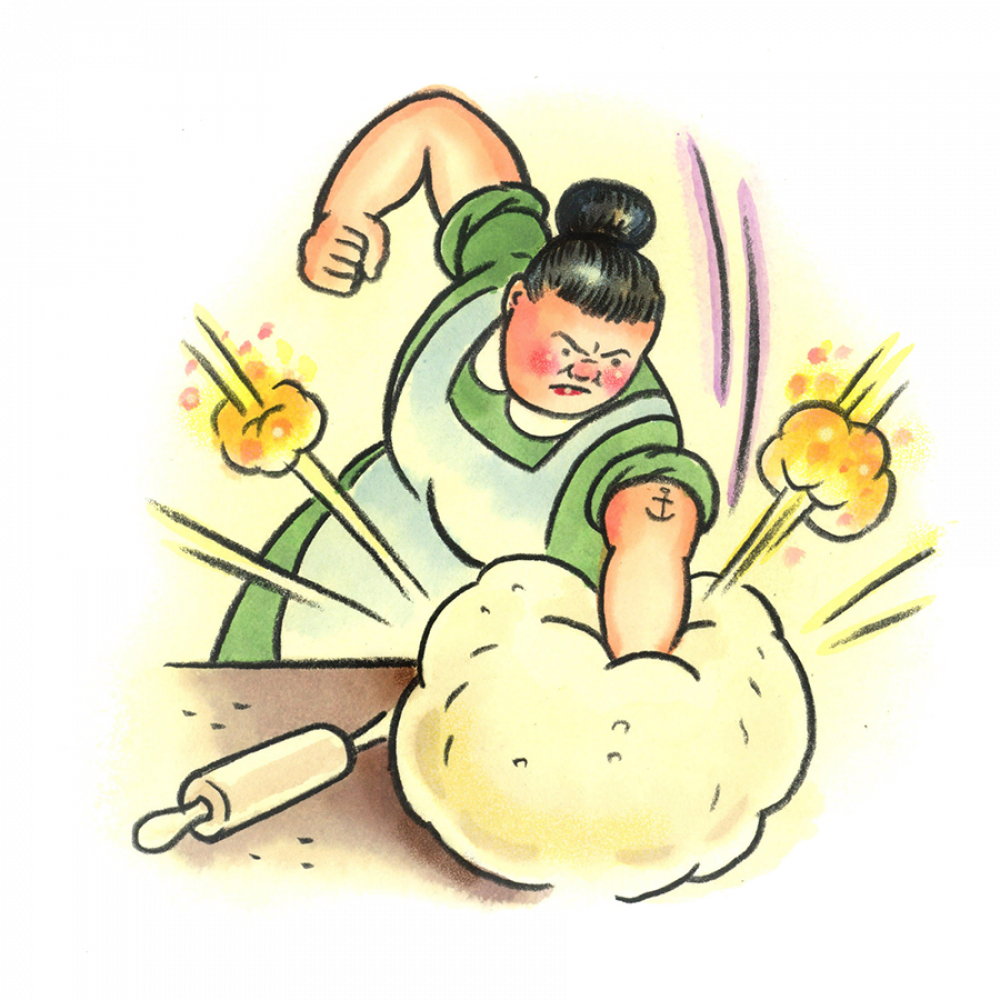
Running Hot and Cold
It’s the culinary equivalent of the chicken or the egg question. When adding oil to a skillet, Rob Sapp, of Ann Arbor, Michigan, wants to know whether the dry pan should be heated first or if the oil should go into the cool pan and heat simultaneously?
At Milk Street, we almost always add oil to a cold pan, then heat the two together. This method allows the oil to act as a visual indicator of how hot the pan is: As it heats, the oil ripples, shimmers and eventually barely smokes. Conversely, heating a dry pan offers no visual cues, which risks overheating. Adding oil to an overheated pan can cause splattering—and potentially even a grease fire. When using carbon-steel and cast-iron pans, some people like to heat the dry pan first, then add the oil. This is because high heat causes the oil to oxidize and polymerize, allowing it to bond to the metal, filling in any small pits and divots—a process that seasons the pan, essentially giving it a nonstick surface. But in our testing we found we could season a carbon-steel pan just as easily by starting with oil in a cold pan, then heating it until smoking, and repeating the process until the pan develops a golden-brown patina. (This requires high heat; we found that heating the pan and oil over medium produces a sticky residue instead of the near-nonstick coating we desired.) The other part of the equation is when to add the food. Most foods should be added once the oil is hot, which ensures better searing and browning. But when cooking delicate ingredients—such as fresh herbs and spices—or when sweating aromatics like onions or garlic, the ingredients should go in the pan with the cool oil to slowly draw out their flavor without risk of burning.
For the Sake of Argument
Confronted with a supermarket aisle containing rice wine, rice wine vinegar and rice vinegar, Trisha Stanton, of Las Cruces, New Mexico, wondered what the differences were between these products and whether they are interchangeable as ingredients.
Rice wine is an alcohol made from fermented glutinous rice. Some varieties, such as sake, can be consumed as a beverage, but other varieties are used in marinades and sauces. Mirin, for example, is similar to sake but sweeter and contains less alcohol, particularly the variety sold in most supermarkets, called aji-mirin. Rice vinegar and rice wine vinegar are different names for the same thing. They are made by first fermenting rice to produce alcohol; the resulting wine is then transformed into vinegar. The finished product is less acidic and sweeter than distilled white vinegar, and is used for marinades, dressings and pickling. Seasoned rice vinegar is a similar product but has added sugar and salt; it’s the vinegar used to season sushi rice. To test how interchangeable the ingredients are, we used aji-mirin, rice vinegar and seasoned rice vinegar to make the same vinaigrette. Aji-mirin was the sweetest. The two vinegars, meanwhile, were similar in flavor (both sharper and brighter), with the seasoned vinegar being slightly sweeter, though not as sweet as the aji-mirin. Of the three, we suggest keeping unseasoned rice vinegar in your pantry. It’s the most balanced and versatile—and you can simply add salt and sugar to your liking to mimic the flavor of seasoned rice vinegar or aji-miri.
Knead to Know
Martha D., of San Jose, California, noticed that bread recipes a few decades old (or older) generally call for kneading, while contemporary recipes often call for dough to be folded. She wonders what caused the change.
Let’s start by defining our terms. Kneading dough involves working it with a repeated push-pull motion. Folding is a more gentle technique; the dough is stretched, then folded over on itself. Generally, the moisture content of the dough determines which method is best. The wetter the dough, the more difficult it is to knead, so folding often is better for doughs such as focaccia, ciabatta and high-hydration sourdoughs. The final texture of the bread is also a consideration: Folding allows for a looser crumb and larger air pockets. Kneading, meanwhile, deflates air pockets, creating a tighter, denser crumb more suitable for loaves of sliceable sandwich bread. Martha likely has seen more recipes calling for folded dough because, in recent years, high-hydration artisanal breads have become increasingly en vogue among home bakers. To compare the two techniques directly, we made both a kneaded and a folded version of whole-wheat levain bread. Made with a sourdough-like natural starter, this bread features a dough firm enough to knead, but with enough hydration that it also can be folded. After baking and cooling, the folded dough did indeed have more of a ciabatta- like interior with larger air pockets and a chewier, looser crumb than the kneaded loaf.




